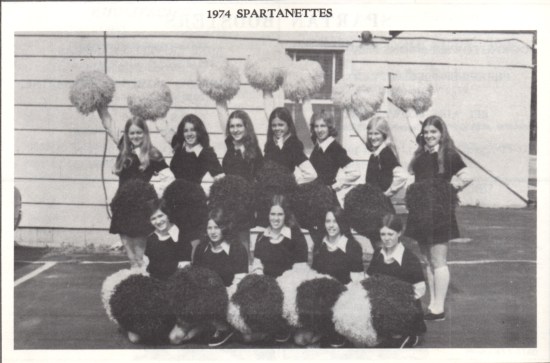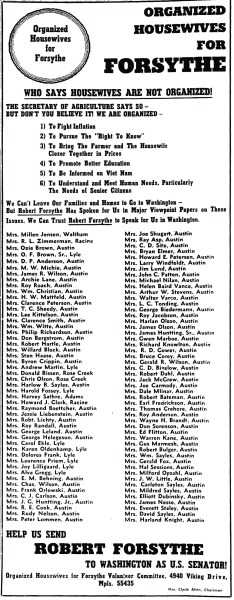 Often when a new collector finds unworn lingerie in a box clearly not its original, they shy away from the purchase, concerned the lingerie is not authentic vintage. While there are unscrupulous sellers, finding panties in a slip box is not uncommon; on the contrary, it is quite common.
Often when a new collector finds unworn lingerie in a box clearly not its original, they shy away from the purchase, concerned the lingerie is not authentic vintage. While there are unscrupulous sellers, finding panties in a slip box is not uncommon; on the contrary, it is quite common.
Those who collect vintage lingerie — and who do so not only bidding at online auctions, but by attending estate sales — know that ladies used to store their delicates in boxes. Lingerie boxes, pretty satin and other fabric covered boxes to fit inside drawers or be displayed on top of dressers and vanities as well as cardboard boxes from maker or retailer (as well as lingerie bags), were used to spare delicate garments from potential snags from wooden drawers and their metal hardware. But more than this, the original cardboard boxes the lingerie itself came in were used for storage.
Ladies didn’t put all their lingerie pieces in one place and paw through it for their daily selection; several pieces, enough for a week or so, would be in the rotation, with the rest waiting their tour of duty. New purchases and gifts of lingerie would be kept in their original sales box, or placed in one of the emptied and saved boxes, and then taken to closets, where they’d sit on the shelves, waiting their turn to be unpackaged and sent to the lingerie boxes and drawers.
Since boxes from previous lingerie purchases and gifts would be saved to store future under garments, panties would be placed in slip boxes, bras would be found in girdle boxes, etc., and even girdles found in girdle boxes may not be the same brand, size, etc..
 Stocking boxes are the most commonly found of the vintage lingerie boxes. This is due in part to the fact that stockings continued to be sold in boxes (usually as sets of multiple pairs) far longer than other forms of lingerie; slips, nightgowns, and foundation garments were displayed on hangers in stores, and packaged at the retail wrap desk in paper and ribbons at the time of purchase.
Stocking boxes are the most commonly found of the vintage lingerie boxes. This is due in part to the fact that stockings continued to be sold in boxes (usually as sets of multiple pairs) far longer than other forms of lingerie; slips, nightgowns, and foundation garments were displayed on hangers in stores, and packaged at the retail wrap desk in paper and ribbons at the time of purchase.
While stockings can often be found still in their original boxes, they may not be in unworn condition. Once one stocking was too worn to be of good service, that stocking would be removed from the stocking rotation (either tossed out, put in the old scraps bag for crafts, or otherwise recycled) — but its still-serviceable mate would continue on. It might be removed temporarily from circulation, placed into a box and put back into the closet again, but a satisfactory used mate would arrive soon enough as ladies often purchased stockings in multiple pairs of the same maker, shade, and size.
 Perhaps the most delightful part of all this, is the plethora of pretty vintage and even antique lingerie boxes left for collectors.
Perhaps the most delightful part of all this, is the plethora of pretty vintage and even antique lingerie boxes left for collectors.
Like any other are of collecting, vintage lingerie boxes are collected for nearly as many reasons as there are collectors.
Some collect for the pretty illustrations and stunning graphics; others for the historical preservation of a particular brands logos and marketing over time. There are the cross-collectible cases of advertising collectors, pinup collectors, collectors of individual artists, etc. And I know one collector who just collects blondes — a vintage blonde printed on an old lingerie box will sit pretty with her collection of blonde figurines, dolls, postcards, etc.
Sometimes the boxes are deceptive… Plain outsides often hide their goodies inside, like this beautiful antique bloomer box.



Sometimes the insides of plain boxes are just as plain as the outsides, but you never know just what you might find inside… Lingerie, lovely vintage tissue paper, old store tags &/or receipts, love letters — who knows? Always inspect the insides of the boxes — and the folds of any lingerie contents — for such goodies.
However, there are times the box itself is far more amusing than what you find inside. *wink*


The saddest thing about collecting vintage lingerie and boxes, though, is to find the most beautiful lingerie that was set aside and never worn…
 It’s difficult not to imagine that like too many women today, yesteryear’s woman set such lovely pieces aside for a “some day” that never came — or worse, she just didn’t think she was worthy of such fragile, delicate beauty.
It’s difficult not to imagine that like too many women today, yesteryear’s woman set such lovely pieces aside for a “some day” that never came — or worse, she just didn’t think she was worthy of such fragile, delicate beauty.
…Then again, maybe she just intended to re-gift?
In any case, such finds are a collector’s dream. But it’s also a reminder that we can’t take it with us, so we should enjoy what we have today.
Or, at the very least, save it for someone who will — no matter how many decades later they find it.
Image credits, in order they appear:
Vintage days of the week Super Fit Garment panties in a Honey Girl Slip box , via designofthetime.
, via designofthetime.
Vintage Berkshire Stockings box with embossed paper lining, via mountaincoveantiques.
Vintage Munsing Wear hosiery box, via VanityTreasures.com.
Antique box for Blossom Bloomers, Worn the World Over, Pat. Nov 15, 1927, box, via JRs Estate and Antique Gallery .
.
Vintage novelty joke, Quickies: The Panty For Busy Women, via roseyreddog boutique.
Vintage Vanity Fair lingerie box with original slip, label and price tag, via unbuttoned4u.














































































































